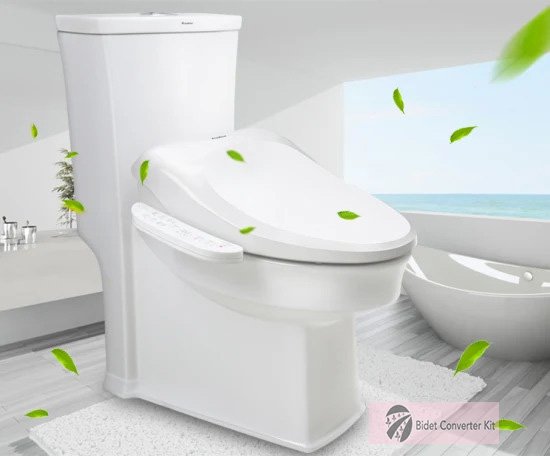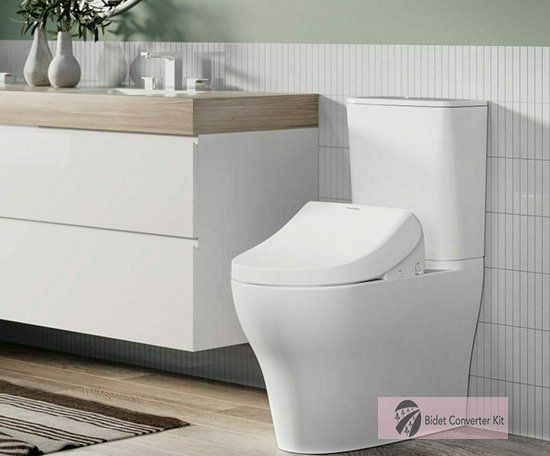Bidets are not just for fancy hotels anymore. Now, they are popping up everywhere, giving us a cleaner option than toilet paper. But bidets are not all the same, they are different all around the world. In Japan, they have fancy ones called washlets, while in Southeast Asia, they use simpler handheld sprayers. It’s interesting to see how bidet culture changes depending on where you are.
In this blog “Exploring Bidet Culture Around the World” we will take you to a journey to learn about how bidets are used in different places. We will look at where bidets came from, starting in the East, and see how they have changed over time. We will also find out how things like social rules, weather, and new technology have influenced how bidets are used in different cultures.
This blog goes deeper than just talking about bidet seats. We will look at why people in Southeast Asia like handheld sprayers so much and what they mean to their culture. Plus, we will check out what’s happening with bidets in Europe and Latin America.
Eastern Origins: Bidets Take Root in Asia
Our journey into bidets starts in the East, where people first started using them for cleanliness. Although we are not exactly sure where they came from, we can find mentions of special vessels for washing in old Islamic writings. These vessels were important for religious reasons, showing how much people cared about staying clean.
Let’s jump to China in the 8th century, where they had something called the “yougui,” which means “washbasin.” These early bidets were only in rich people’s houses, showing that having one was a sign of being important.
The fact that people in China used bidets a long time ago shows how much they valued being clean and how having a bidet was seen as a way to show you were rich and important in Eastern cultures.

Japan: The Washlet Revolution and Beyond
In the 1900s, Japan led the way in changing how bidets worked. They introduced something called a “washlet,” which totally changed the game. Instead of being a regular bidet, the washlet was like a fancy attachment for toilets. It used warm water to clean you and had lots of cool features that worked automatically.
People loved it, and soon, washlets were everywhere in Japanese bathrooms, making bidets a normal thing for everyone to use. In Japan, washlets are everywhere in homes now. These high-tech toilet attachments have cool features like letting you adjust the water pressure to how you like it, control how warm the water is for extra comfort, and even clean themselves.
But having washlets isn’t just about being practical, it shows how much Japanese people care about staying clean and making things easy in their everyday lives. When you use a washlet in Japan, it’s like experiencing their way of thinking firsthand – everything’s clean and easy, just the way they like it.
Southeast Asia’s Embrace of the Sprayer
As we head south on our bidet adventure, we reach Southeast Asia, where a different kind of bidet is popular which is the handheld sprayer. Unlike the fancy washlets in Japan, Southeast Asia prefers something simpler and cheaper. They like using handheld sprayers the most here.
These little sprayers let you aim the water where you want it and control how strong the spray is, giving you a personalized cleaning experience. The popularity of bidet sprayers in Southeast Asia is due to two main reasons.
Firstly, the hot and humid weather there means people need to clean themselves often to stay hygienic. Water is better for cleaning in this weather than just using toilet paper. Secondly, in Southeast Asian culture, it’s really important to be clean after going to the bathroom.
The bidet sprayer fits perfectly with this value because it’s an easy and thorough way to feel fresh. While Japan has fancy washlets, Southeast Asia prefers the practicality and affordability of the handheld bidet sprayer. It shows that there’s more than one way to stay clean.
Global Presence of the Bidet
Our journey into bidets goes beyond just Eastern countries. Even though Eastern cultures have been using bidets for a long time, they are found all over the world. In Europe, especially in places like France, Italy, Spain, and Portugal, people have been using bidets in bathrooms for hundreds of years. Here, bidets are seen as something you need to stay clean and hygienic.
But, in recent times, bidets haven’t been as popular in Europe. Some people think this change is because of American bathroom styles becoming more popular. American bathrooms are often smaller and might not have enough space for bidets. Also, there are differences in how Americans and Europeans think about staying clean after using the bathroom.
Because of these reasons, fewer people in Europe are using bidets now. But, you can still find bidets in lots of European bathrooms, showing that they have been an important part of staying clean for a long time.
Latin America
In Latin America, bidet practices vary a lot. In countries like Argentina, Uruguay, and Brazil, bidets used to be really common, especially in rich families. People thought having a bidet showed you were classy, and they were handy for staying clean. But things have changed recently.
Now, in these countries, people are into modern bathroom designs that are simpler and don’t have as many extra things like bidets. Although, in Central American countries like Panama and Costa Rica, bidets are still very popular. People there like using water to clean themselves because they think it’s better and feels nicer than just using toilet paper.
This shows how much culture can affect whether people use bidets or not in different places. Even though there are differences across Latin America, one thing is sure – bidets are still an important part of how many people stay clean in this diverse region.

Cultural Significance of Bidets
Bidets are more than just things in bathrooms, they show us a lot about what different cultures think about staying clean. For instance, look at Southeast Asia. Lots of people there use handheld bidet sprayers because they think it’s important to stay clean all the time. Because the weather is hot and humid there, people need to clean themselves often, and using water with sprayers works better than just using toilet paper.
On the flip side, Japan’s use of bidets tells us a lot about its culture. The fancy washlet they have shows how Japan is always trying to come up with new ideas and make things more comfortable in daily life.
Everything about a washlet, like being able to change how strong the water is and having nozzles that clean themselves, shows this. When you use a washlet in Japan, it’s easy and feels really clean, which shows how much they care about these things in their culture.
Environmental and Health Benefits of Bidets
Using bidets doesn’t just mean cleaner habits, it also helps the environment and our health. As more people use bidets, they use less toilet paper. That means we don’t need to cut down as many trees to make paper, which is good because it helps stop forests from being destroyed. So, by using bidets, we’re not just helping ourselves stay clean, but we are also being kinder to the planet.
Bidets aren’t just good for the environment, they can also help us stay cleaner and healthier. Research shows that using water to clean ourselves might be better than just using toilet paper. It can help us avoid irritation and discomfort, especially if we have sensitive skin or certain health issues.
Future of Bidets
The bidet’s story doesn’t stop with where it’s used around the world. Surprisingly, more people in some Western countries are starting to use bidets, even though they weren’t popular there before. There are a few reasons for this. First, more people care about the environment now, and bidets help because they use less toilet paper.
Second, people want to stay clean and healthy, so they’re trying out different ways to clean themselves. Bidets are better at cleaning than just using toilet paper, which is good for people with sensitive skin. Lastly, people want bathrooms to be more comfortable and clean, so they’re interested in using bidets.
As bidet technology gets better and they become easier to install and cheaper, more people might start using them. In the future, bidets could be common in bathrooms all over the world, making them cleaner, more comfortable, and better for the environment.

FAQ
Bidets seem like a recent invention, but are they really?
No, even though the fancy washlets in Japan are super cool, bidets have actually been around for a really long time. People were talking about using special pots for cleaning themselves in ancient Islamic texts. And in China, they had something called a “yougui” way back in the 8th century.
So, bidets are just for fancy hotels in Asia?
Absolutely not, bidets, or similar cleansing options, are present in various cultures worldwide. Southeast Asia favors handheld sprayers, while Europe has a history of bidet use, though trends might differ across countries.
Why are bidets so popular in Japan?
Several factors contribute to Japan’s bidet obsession. Cultural emphasis on cleanliness, a focus on comfort and innovation, and the invention of the washlet, a bidet seat attachment with features like warm water and adjustable pressure, all play a role.
Are bidets more hygienic than toilet paper?
Research suggests they can be. Water offers a more thorough cleanse, potentially reducing irritation, especially for those with sensitive skin. Additionally, bidets significantly reduce toilet paper consumption, leading to a smaller environmental footprint.
I’m interested in trying a bidet, but what are my options?
You have two main choices: bidet seats, which offer a luxurious and automated experience but require more investment, and handheld sprayers, a simpler and more affordable option that provides targeted cleansing.
Are bidets difficult to install?
It depends, basic bidet seats might be straightforward, but models with complex features might require professional installation. Handheld sprayers typically have a simpler installation process.
Conclusion
Bidets are not just fancy things, they have been around for a long time and are used in many different ways all over the world. In ancient times, people in Japan, they have super fancy bidets with cool features.
Different places have different preferences – like in Southeast Asia, they like handheld sprayers for cleaning, while in Europe, it is a mix.
Bidets are not just about staying clean, though they are also good for the environment because they use less toilet paper. As bidets get cheaper and easier to use, more people might start using them, making bathrooms cleaner and more comfortable everywhere.
